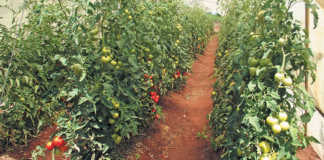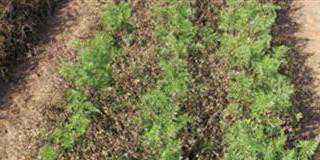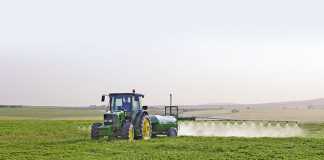
As discussed in the last issue, soil is not simply a substrate to hold roots. It is a living organism, the health of which will vary according to the ‘diet’ you provide for it and the way you treat it. You also need to adapt your management practices to the type and condition of the soil you’re dealing with.
Soils contain various combinations of sand, silt, clay, minerals and organic matter. There are also various types of clay. Montmorillonite-type clay, for example, has a considerable surface area with great expansion and contraction capabilities, whereas kaolin clay is compact and lifeless.
Some years ago, I grew vegetables on soil with a high montmorillonite content. This soil needs to have the correct moisture content when it is worked. If worked too damp, it produces hard clods that expand and contract when they get wet and dry and then crumble into loose soil on its own in time.
Roadways, after a period on unuse, will also do this so that they become impassable when wet – similar to going through a wet ploughed land. In Afrikaans these soils are referred to as brokkelturf (crumbly turf). They are generally highly productive, with the capacity to hold an enormous amount of nutrients.
Taking into account the basic combination of components in soil, more than 40 soil forms have been classified in South Africa. These can be subdivided into many more categories depending on the type of horizons (layers) in each. Each horizon provides unique characteristics. Soils also vary in character depending on management, and the amount of humus, too, can change a soil’s character.
Overgrazed or heavily mown soil
Even virgin soil that has not been mechanically cultivated can deteriorate through overgrazing or mowing for hay production over a number of years. By not allowing the grasses to grow out properly, the root depth and mass of the grasses will be reduced and gradually the humus content will be reduced. The soil on which I grow vegetables was virgin grassland in a poor condition. Initially, I had endless problems with eelworms, soil pathogens and productivity.
Simply by fertilising it properly and keeping cultivation down, I was able to bring about a considerable improvement in the organic status, health and productivity of the soil – even though I was using chemical fertiliser at the time. Allowing more crop residue to remain on the surface and applying sufficient nitrogen ensures that the maximum amount of humus forms from both the root system and above-ground residue. It was this transformation that initiated my interest in the health of soil as I needed to know what happened and why.
I was tilling the soil as little as possible, not by intent but by economic restraints, as I had recently started my own business and getting outsiders to cultivate my soil was costly. If it were not for this, I might never have developed an interest in no-till and minimum-till. It changed my entire outlook on cropping and soil management.
Embrace the variables
Many principles of soil management will apply when working with different soil types and crops, but there is certainly no ‘one size fits all’ solution. The answer is not to be dogmatic but rather embrace all the variables and gain a better understanding of how soils and the organisms in them work. Farming is a business; as a producer, you must obtain the highest yield at the lowest possible production cost. Ensuring that your soil is healthy is one sure way of reducing risks and lowering costs.
Benefits of humus
Increasing the humus content has many benefits, one of which is that humus acts as a buffer. The more of it is in the soil, the less you need to worry about the complex interaction of elements with one another. The buffering effect and the influence of the beneficial microflora in the soil take care of many potential problems that would manifest in a humus-depleted soil with the same mineral composition.
The time it takes to optimise humus levels will depend on the growing area, soil type, crops grown and affordability. The process can be fast-tracked in some cases, however.













